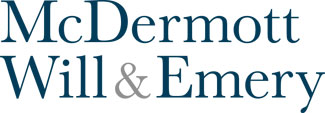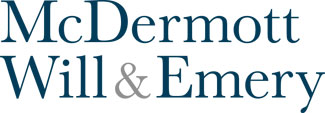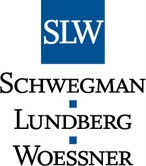
In a highly-anticipated decision that was expected to clarify the test for eligibility of software patents under 35 U.S.C. § 101, in CLS Bank Int’l v. Alice Corp.,1 a divided en banc panel of the Federal Circuit upheld the lower court’s determination that the asserted method, computer-readable medium, and system claims are invalid. In doing so, however, the Federal Circuit further muddied the waters, “propound[ing] at least three incompatible standards, devoid of consensus, serving simply to add to the unreliability and cost of the system of patents as an incentive of innovation.”2 In sorting through the 135 pages of seven different opinions in this decision, at least a few takeaways include: (1) the future of software patents remains uncertain for the time being; (2) until further development, the outcomes of future Federal Circuit cases regarding software patents will vary greatly based on the specific judicial panels deciding the cases; and (3) for now, parties filing and enforcing software patents should consider focusing their subject matter more heavily on system claims and the hardware used in those systems.
Background
At issue were patents directed to “a computerized trading platform used for conducting financial transactions in which a third party settles obligations between a first and a second party so as to eliminate . . . ‘settlement’ risk.”3 Certain of the asserted claims “recite methods of exchanging obligations between parties,” others “are drawn to data processing systems,” and others are directed to “computer-readable media containing a program code for directing an exchange of obligations.”4
CLS Bank filed suit in the United States District Court for the District of Columbia against patent owner Alice Corp. seeking, in pertinent part, a declaratory judgment of patent invalidity under 35 U.S.C. § 101.5 The District Court granted summary judgment that the asserted claims are invalid as being directed to ineligible subject matter (i.e., an abstract idea).6 Alice Corp. appealed to the Federal Circuit, and a three-judge panel reversed the District Court and found all of the asserted claims to be patent eligible.7 The Federal Circuit granted CLS Bank’s petition for rehearing en banc.8
The En Banc Decision
In a one paragraph per curiam opinion, a majority of the en banc panel affirmed the District Court’s holding that the asserted method and computer-readable medium claims are ineligible and invalid under § 101, and because a majority could not be reached with respect to the asserted system claims, the District Court’s determination regarding those claims remained intact, rendering the asserted system claims ineligible and invalid under § 101 as well.9
None of the six remaining opinions garnered a majority of six of the ten judges that sat on the en banc panel.10Accordingly, as best stated by Chief Judge Rader, “though much is published today discussing the proper approach to the patent eligibility inquiry, nothing said today beyond our judgment has the weight of precedent.”11 Thus, the precedential effect of the Federal Circuit’s decision is limited to the asserted claims, with the remaining opinions simply providing insight into the Judges’ different, conflicting proposed approaches to determining patent eligibility.12
Judge Lourie Requires an Inventive Concept
Judge Lourie, joined by four panel members, advocated that a claim embodying an abstract idea is patent eligible under § 101 if that claim includes “additional substantive limitations”—which Judge Lourie termed an “inventive concept”—“that narrow, confine, or otherwise tie down the claim so that, in practical terms, it does not cover the full abstract idea itself.”13In other words, according to Judge Lourie, if a claim includes elements embodying an abstract idea, additional elements of the claim (i.e., those elements not embodying the abstract idea) must include an “inventive concept” for the claim to be patent eligible. With respect to claim directed to computer-implemented inventions, Judge Lourie asserted that “appending generic computer functionality to lend speed or efficiency to the performance of an . . . abstract concept does not meaningfully limit the claim scope for purposes of patentability. . . . [T]he requirement for computer participation . . . fails to supply an ‘inventive concept.’”14
Applying this approach to the asserted claims, Judge Lourie opined that the claims embodied “the abstract idea of reducing settlement risk by effecting trades through a third-party intermediary . . . empowered to verify that both parties can fulfill their obligations before allowing the exchange—i.e., a form of escrow.”15 He found that none of the elements of any of the claims in addition to those embodying the alleged abstract idea, including the structural elements of the system claims,16 include an “inventive concept,” and found all of the asserted claims to be ineligible and invalid under § 10117. Regarding the inclusion of computer functionality in the claims, Judge Lourie stated that “adding generic computer functions to facilitate performance provides no substantial limitation and therefore is not ‘enough’ to satisfy § 101.”18Judge Lourie largely disregarded the format of the claims (i.e., whether the claims were drawn to methods, computer-readable media, or systems), opining that “when § 101 issues arise, the same analysis should apply regardless of claim format.”19
Chief Judge Rader Focuses on Meaningful Limitations
Chief Judge Rader, joined in full by one panel member20 and in part by two other panel members,21 disagreed with Judge Lourie’s requirement of an “inventive concept,”22 and instead advocated that a claim embodying an abstract idea is patent eligible under § 101 if that claim includes “limitations that meaningfully tie that [abstract] idea to a concrete reality or actual application of that idea.”23 With respect to a claim directed to a computer-implemented invention, Chief Judge Rader opined that the claim is patent eligible “where the claim is tied to a computer in such a way that the computer plays a meaningful role in the performance of the claimed invention, and the claim does not pre-empt virtually all uses of an underlying abstract idea.”24
Applying this approach to the asserted system claims, Chief Judge Rader found the system claims to be patent eligible, stating that “the claim covers the use of a computer and other hardware specifically programed to solve a complex problem. . . . The specific functions recited in these claims, which are integral to performing the invention, show that the . . . claims are directed to practical applications of the underlying idea and thus are patent-eligible.”25 Chief Judge Rader stated that the specification “explains implementation of the recited special purpose computer system” and “includes numerous flowcharts that provide algorithm support for the functions recited in the claims,” concluding that “[l]abeling this system claim an ‘abstract concept’ wrenches all meaning from those words, and turns a narrow exception into one which may swallow the expansive rule (and with it much of the investment and innovation in software).”26
Turning to the asserted method claims, Chief Judge Rader stated that the claims embody the abstract idea “of using a neutral intermediary in exchange transactions to reduce risk that one party will not honor the deal, i.e., escrow management.”27 He found the asserted method claims to be ineligible and invalid under § 101 because the recited steps were “inherent in an escrow and claimed at a high level of generality” and did not add any meaningful limitations to the claims.28 Because Alice Corp. conceded that the method claims and the computer-readable medium claims rise or fall together, Chief Judge Rader also found that the asserted computer-readable medium claims were ineligible and invalid under § 101.29
Judge Newman Defers to the Plain Language of the Statute
Judge Newman would abolish the judicially-created exceptions to § 101, and advocated that the Federal Circuit “abandon its failed section 101 ventures into abstraction, preemption, and meaningfulness,” and find that a claim is patent eligible if “the subject matter is within the statutory classes in section 101.”30 In other words, under Judge Newman’s approach, a claim is patent eligible if that claim recites a “process, machine, manufacture, or composition of matter,”31 and “claims that are ‘abstract’ or ‘preemptive’“ will be “eliminate[d] . . . on application of the laws of novelty, utility, prior art, obviousness, description, enablement, and specificity.”32 Applying this approach to the asserted claims, Judge Newman found all of the claims to be patent eligible.33 Judge Newman also called for the Federal Circuit to confirm a right of “experimental use of patented information,” which she believes would render it “no longer . . . necessary to resort to the gambit of treating such information as an ‘abstraction’ in order to liberate the subject matter for experimentation.”34
Interestingly, Chief Judge Rader, in his separately-filed additional reflections, seemed to agree with Judge Newman’s adherence to the plain language of the statute, stating: “I doubt innovation is promoted when subjective and empty words like ‘contribution’ or ‘inventiveness’ are offered up by the courts to determine investment, resource allocation, and business decisions. . . . [W]hen all else fails, it makes sense to consult the simplicity, clarity, and directness of the statute.”35
Judge Linn Calls for Congressional Action
Judge Linn addressed the concerns expressed by various Amici “regarding the proliferation and aggressive enforcement of low quality software patents,” opining that “broadening what is a narrow exception to the statutory definition of patent eligibility should not be the vehicle to address these concerns.”36 Rather, Judge Linn called for legislative action, asserting that “Congress can, and perhaps should, develop special rules for software patents.”
A Divided Majority Believes that the Asserted Claims Should Rise or Fall Together
As noted by Judge Lourie, a majority of the en banc panel agreed that, under the particular facts of this case, the asserted method, computer-readable medium, and system claims should rise or fall together. It is important to note, however, that the majority did not agree on why all of the asserted claims should rise or fall together.38 Judge Lourie and those joining his concurring opinion believed that the asserted claims should rise or fall together because they all fail to satisfy his inventive concept test. Judge Linn and Judge O’Malley, on the other hand, believed that the asserted claims should rise or fall together because, based on the record, all of the claims “are grounded by the same meaningful limitations that render them patent eligible.”39 Finally, Judge Newman simply stated that “patent eligibility does not depend on the form of the claim.”40 Since the majority did not agree on why all of the asserted claims should rise or fall together, the fact that they agreed that the claims should rise or fall together in this particular case has no precedential effect.
Implications
At the outset, it is important to note that Alice Corp. will almost certainly ask the Supreme Court to hear the case. The combination of the divided nature of this en banc decision, the arguably incompatible Federal Circuit precedent regarding § 101, and the potential impact on the patent system makes it likely that the Supreme Court will hear the case to (hopefully) provide clarity to courts, patent owners, and inventors. Judge Moore aptly summarized the potential impact of this case: “If the reasoning of Judge Lourie’s opinion were adopted, it would decimate the electronics and software industries. . . . There has never been a case which could do more damage to the patent system than this one.”41
In the meantime, during this period of uncertainty, when preparing a patent application directed to an invention implemented in software, the applicant should consider including as much computer hardware as possible in the specification (including the claims) without unduly limiting the invention, and then tying the central software steps and functionality of the invention to those hardware elements. The applicant should also consider including system claims that include the hardware elements and how they interact to perform the software functions within the central portions of the claims.
Additionally, a patentee asserting claims directed to software during litigation should consider only asserting system claims. Although the majority did not agree on the reason why the asserted claims should rise or fall together in this particular case (robbing the decision of any precedential effect), the majority nevertheless appears to believe that claims should rise or fall together. Since method and computer-readable medium claims are more likely to be found invalid than system claims according to this decision, a patentee may not want to risk system claims being found invalid simply because corresponding method and/or computer-readable medium claims are found invalid.
1 No. 2011-1301, slip op. at 6–7 (Fed. Cir. May 10, 2013) (per curiam).
2 Id. at 1–2 (Newman, J., concurring-in-part and dissenting-in-part).
3 Id. at 2–3 (Lourie, J., concurring) (citing CLS Bank Int’l v. Alice Corp., 768 F. Supp. 2d 221, 224 (D.D.C. 2011)).
4 Id. at 3–4.
5 Id. at 4 (Rader, C.J., concurring-in-part and dissenting-in-part) (citing CLS Bank Int’l, 768 F. Supp. 2d at 221).
6 Id.
7 Id.
8 The Federal Circuit granted the petition for rehearing en banc to address the following two questions:
a. What test should the court adopt to determine whether a computer-implemented invention is a patent ineligible “abstract idea”; and when, if ever, does the presence of a computer in a claim lend patent eligibility to an otherwise patent-ineligible idea?
b. In assessing patent eligibility under 35 U.S.C. § 101 of a computer-implemented invention, should it matter whether the invention is claimed as a method, system, or storage medium; and should such claims at all times be considered equivalent for § 101 purposes?
Id. at 4 (quoting CLS Bank Int’l v. Alice Corp., 484 F. App’x. 559 (Fed. Cir. 2012)).
9 Id. at 6–7 (per curiam). Chief Judge Rader, Judge Dyk, Judge Lourie, Judge Moore, Judge Prost, Judge Reyna, and Judge Wallach determined that the asserted method and computer-readable medium claims are ineligible and invalid under § 101. Judge Dyk, Judge Lourie, Judge Prost, Judge Reyna, and Judge Wallach found that the asserted system claims are ineligible and invalid under § 101, while Chief Judge Rader, Judge Linn, Judge Moore, Judge Newman, and Judge O’Malley determined that the asserted system claims are patent eligible.
10 Judge Taranto did not participate in the decision. Id. at 6.
11 Id. at 1–2 n.1 (Rader, C.J., concurring-in-part and dissenting-in-part) (emphasis added).
12 Note that Chief Judge Rader wrote separately to express his dismay at the outcome. Id. (Rader, C.J., additional reflections).
13 Id. at 17–22 (Lourie, J., concurring). Judges Dyk, Prost, Reyna, and Wallach joined Judge Lourie’s opinion.
14 Id. at 27.
15 Id. at 25.
16 Id. at 34 (The “tangible devices . . . , including at least ‘a computer’ and ‘a data storage unit’” recited in the claims “cannot support any meaningful distinction from the computer-based limitations that failed to supply an ‘inventive concept’ to the related method claims.”).
17 Id. at 26–29, 31, 36.
18 Id. at 28.
19 Id. at 33.
20 Judge Moore filed a separate dissenting-in-part opinion, joined by Chief Judge Rader and Judges Linn and O’Malley, “to explain why the system claims at issue are directed to patent eligible subject matter.” Id. at 4 (Moore, J., dissenting-in-part).
21 Judges Linn and O’Malley did not join in the portion of Chief Judge Rader’s opinion that found the asserted method and computer-readable medium claims to be ineligible and invalid under § 101. Id. at 1–2 (Linn, J., dissenting). Judge Linn filed a separate dissenting opinion, joined by Judge O’Malley, that found the asserted method and computer-readable medium claims to be patent eligible. Id. at 11–12.
22 Id. at 5–11, 22 n.5 (Rader, C.J., concurring-in-part and dissenting-in-part).
23 Id. at 16.
24 Id. at 22.
25 Id. at 31, 35.
26 Id. at 31–32, 34.
27 Id. at 39–40.
28 Id. at 40–42.
29 Id. at 39, 42.
30 Id. at 11–13 (Newman, J., concurring-in-part and dissenting-in-part).
31 35 U.S.C. § 101.
32 CLS Bank Int’l, No. 2011-1301, slip op. at 4 (Newman, J., concurring-in-part and dissenting-in-part).
33 Id. at 14.
34 Id. at 9–10.
35 Id. at 5 (Rader, C.J., additional reflections).
36 Id. at 12–13 (Linn, J., dissenting).
37 Id. at 13.
38 Id. at 2 n.1 (Lourie, J., concurring).
39 Id. at 1–2 (Linn, J., dissenting).
40 Id. at 4 (Newman, J., concurring-in-part and dissenting-in-part).
41 Id. at 2–3 n.1 (Moore, J., dissenting-in-part). Judge Moore explicitly requested that the Supreme Court provide guidance on this issue: “It has been a very long time indeed since the Supreme Court has taken a case which contains patent eligible claims. This case presents the opportunity for the Supreme Court to distinguish between claims that are and are not directed to patentable subject matter.” Id. at 3.
Like this:
Like Loading...








